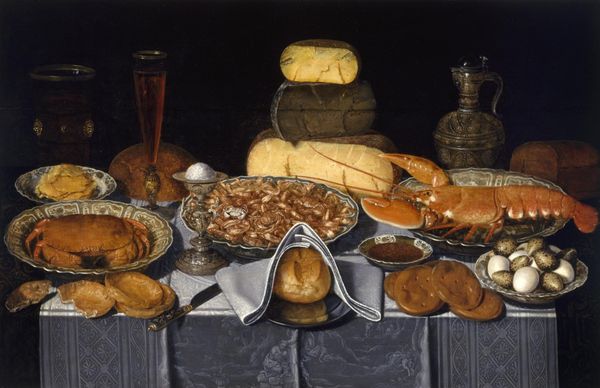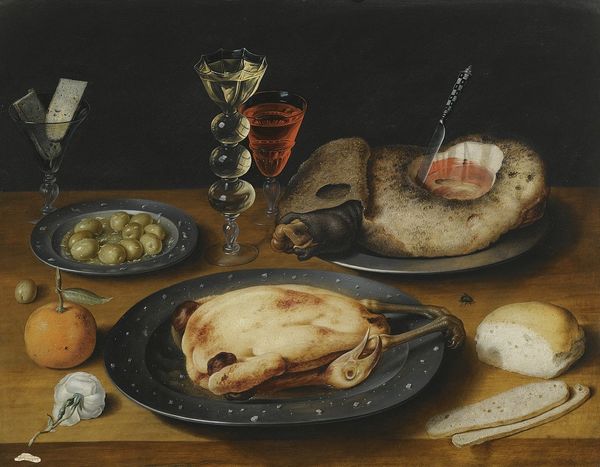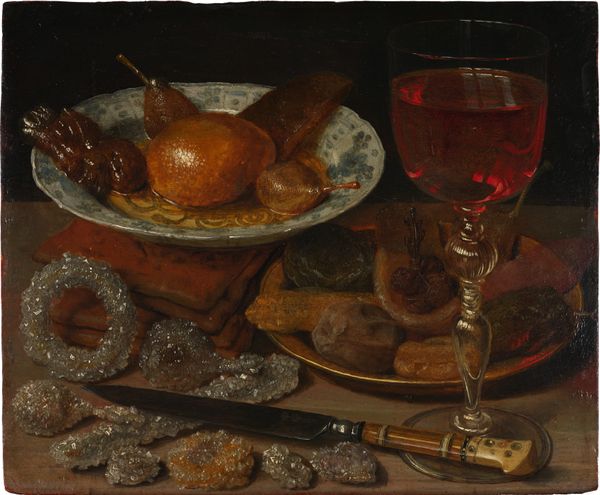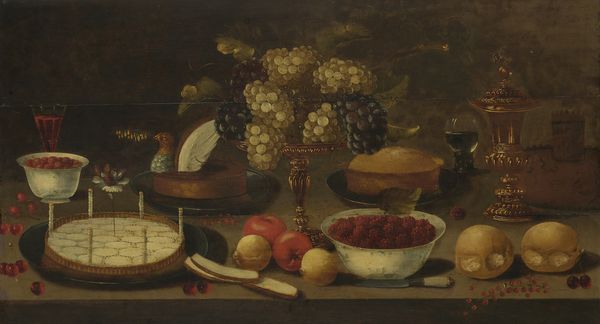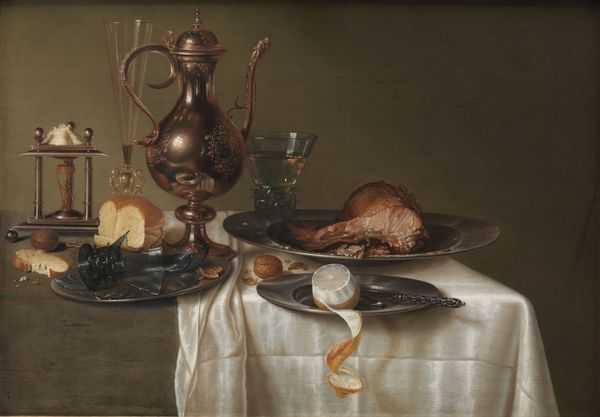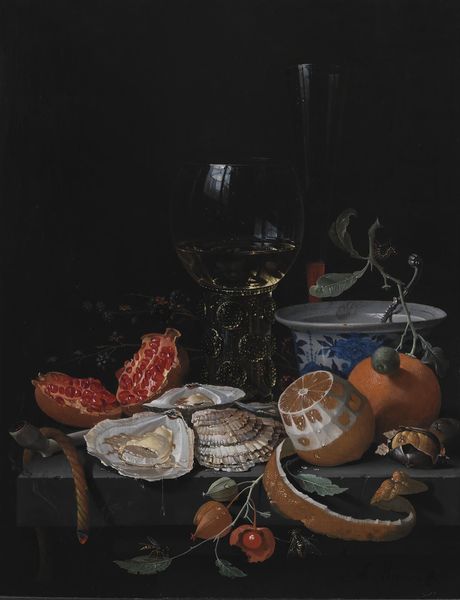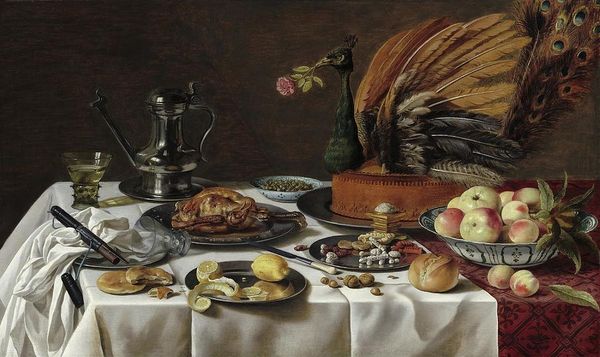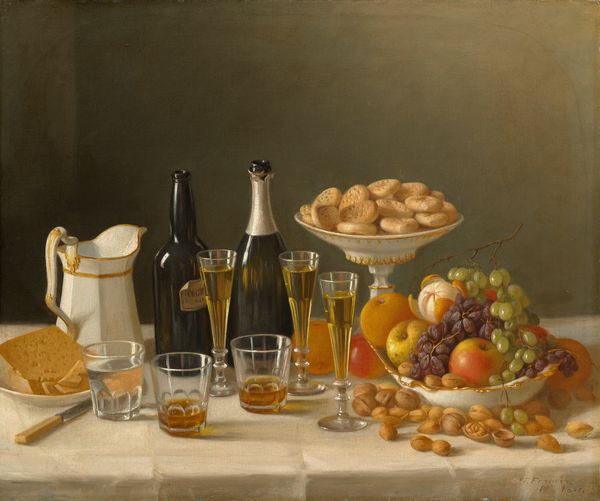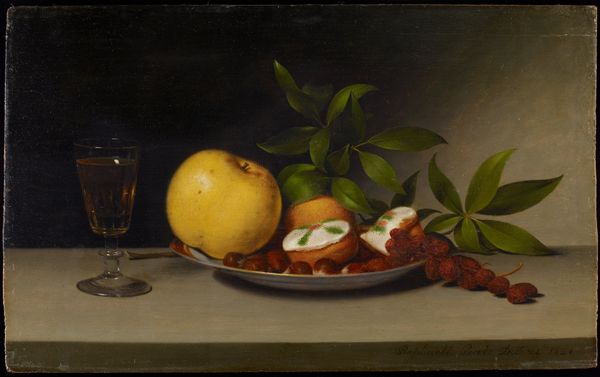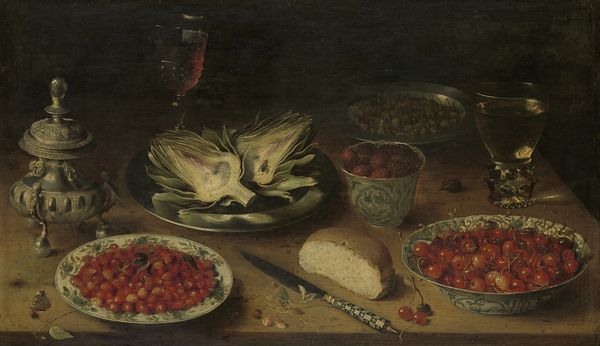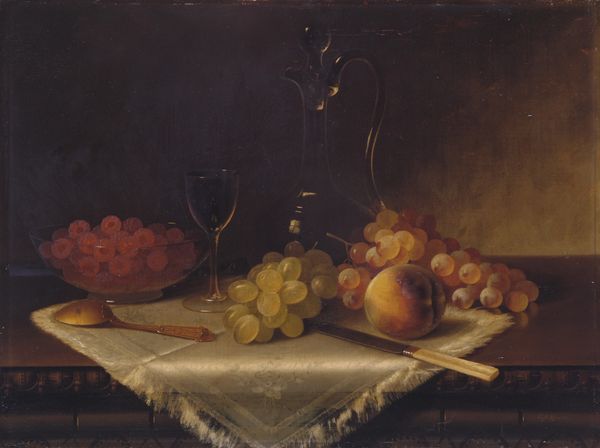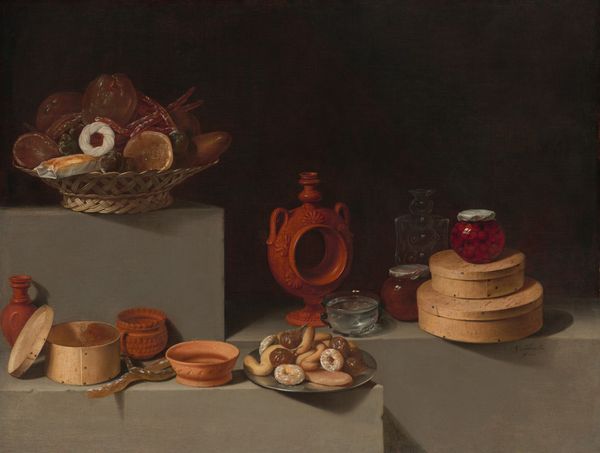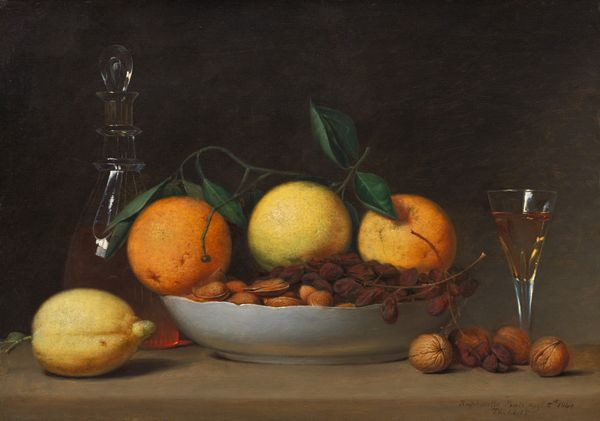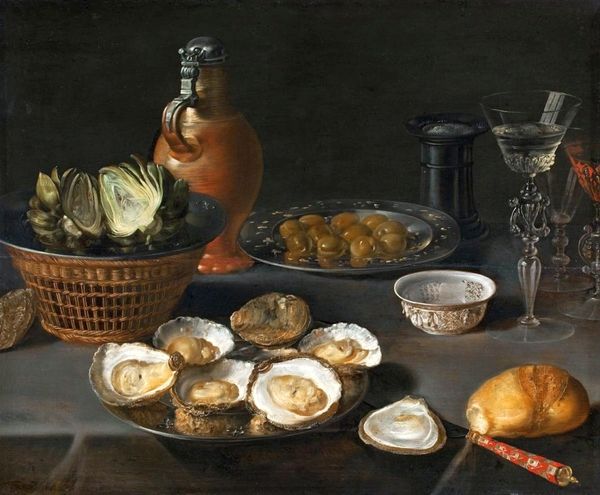
carving, painting, oil-paint, earthenware
#
portrait
#
carving
#
baroque
#
animal
#
painting
#
oil-paint
#
landscape
#
perspective
#
figuration
#
oil painting
#
earthenware
#
geometric
#
13_16th-century
#
orientalism
#
food art
#
earthenware
#
realism
Dimensions: 31.0 x 40.2 x 0.5 cm
Copyright: Public Domain
Georg Flegel painted this still life on a small copper plate, likely during the early 17th century. The meticulous layering of oil paint allows Flegel to conjure the textures of contrasting surfaces: the dull gleam of pewter, the rough crust of bread, the slick scales of the pike’s head. But it’s not just a tour-de-force of illusion. Flegel’s choice of objects tells us a lot about the culture of consumption in his day. These goods—seafood, fruit, wine, and nuts—were traded across Europe. They speak to the expansion of markets and the growing availability of luxury items to those who could afford them. Consider too, the labor involved in the production of these objects: the fishermen who braved the seas, the vintners who cultivated the grapes, the metal workers who crafted the vessels on display. When we appreciate the making of things, we start to see beyond the surface, and understand the complex web of relationships that connects us to the past.
Comments
stadelmuseum about 2 years ago
⋮
Georg Flegel, a native of the Moravian city of Olomouc, learned his craft from the Flemish artist Lucas van Valckenborch. The first German still-life specialist followed his teacher from Linz to Frankfurt. This painting dates from Flegel’s early Frankfurt period, as is confirmed by the coins seen at lower left – the so-called Schüsselpfennige of Frankfurt mintage. On the table, we see an assembly of simple and expensive foods: water and wine, dark bread and the more genteel white bread, two lobsters and a simple pike’s head suitable only as the basis for soup or aspic.
Join the conversation
Join millions of artists and users on Artera today and experience the ultimate creative platform.
